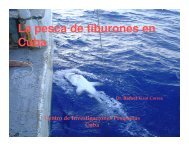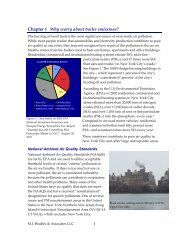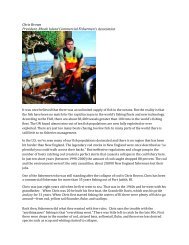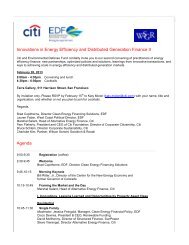http://www.fakr.noaa.gov/ram/daily/ifqqscompare.htm. Data on changes inownership (number of persons, Alaskan vs. non-Alaskan) in AK halibut fishery from1995-2006.112. National Marine Fisheries Service, National Oceanic and Atmospheric Administration,U.S. Department of Commerce. 2006g. Monthly Commercial Landing Statistics. RetrievedMay 18, 2006, fromhttp://www.st.nmfs.gov/st1/commercial/landings/monthly_landings.html. Landingsand value for all U.S. commercial species by state, year, and month.113. National Oceanic and Atmospheric Administration, 2006a. Essential Fish Habitat (EFH)GIS data. AK regional office. Retrieved February 9, 2006, from http://akrmapping.fakr.noaa.gov/Website/EFH/viewer.htm?enhanced.Geographic InformationSystem data on fish habitat in Alaska.114. National Oceanic and Atmospheric Administration, 2006b. Exclusive Economic ZoneGeographic Information System (GIS) data. Retrieved February 10, 2006, fromhttp://nauticalcharts.noaa.gov/csdl/eez.htm. Geographic Information System data onExclusive Economic Zones.115. National Oceanic and Atmospheric Administration, 2006c. Marine Recreational FisheriesStatistics Survey. Retrieved September 8, 2006 fromhttp://www.st.nmfs.gov/st1/recreational/downloads.html. The Marine RecreationalFisheries Statistics Program team provides essential marine recreational fisheriesinformation to government, scientists, and the public. The team of fisheries biologists,statisticians, and data managers provides accurate, precise, and timely fisheriesdependentinformation for US marine waters by conducting and evaluating the MarineRecreational Fisheries Statistics Survey (MRFSS) to produce catch, effort andparticipation estimates, and to provide biological, social and economic data, ensuringquality control and quality assurance of the MRFSS, researching new survey designs,providing statistical advice and promoting quality recreational fisheries informationwithin NMFS and to other natural resource management agencies and organizations,participating in NMFS planning efforts to improve internal fisheries-dependent datacollection and management, participating in coastal State/Federal efforts to plan andimplement coordinated and cooperative recreational fisheries data collection andmanagement programs, communicating survey and research results, and educating thepublic about the survey and new research.116. National Research Council. 1999a. Sharing the Fish: Toward a National Policy on the Use ofIndividual Quotas in Fisheries. Washington, D.C.: National Academy Press.http://www.nap.edu/books/0309063302/html. In depth report on the performance offour U.S. ITQs based on requests from Congress, resulting in recommendations to liftthe then moratorium on ITQs. Individual fishing quotas have been used worldwidesince the late 1970s. A few countries, particularly Canada, New Zealand, and Iceland,have significant experience in the benefits and problems of developing, implementing,and managing IFQs. This tool has been adopted in four U.S. fisheries (Alaskan halibutand sablefish, wreckfish, and surf clams/ocean quahogs), and programs were about tobe implemented in two other fisheries when Congress intervened through enactment ofthe Sustainable Fisheries Act of 1996, establishing a moratorium on new programs.- 20 -
Congress asked the National Academy of Sciences to study a wide range of questionsconcerning the social, economic, and biologic effects of IFQs and other limited entrysystems and to make recommendations about existing and future IFQ programs. Acommittee with expertise in fisheries biology and management, anthropology,economics, law, political science, and business was established to study all aspects ofIFQs in response to the request from Congress. Over a seven-month period, thecommittee held hearings in Anchorage, Seattle, New Orleans, Washington, D.C., andBoston. It heard testimony from fishermen, processors, state and federal regulators,academicians, environmental groups, and members of the public, and received a largeamount of written material. This report is the result of the committee's deliberations.For example, the Alaskan IFQ programs for halibut and sablefish addressed andreduced overcapacity and safety problems associated with derby fisheries. Evidencefrom the Alaskan IFQ programs suggests that the derby has been eliminated, safety hasimproved, and ghost fishing has been reduced. At the same time, these IFQ programshave left the halibut and sablefish fisheries with fewer fishermen (as intended) and haveenriched many of those whose catch history qualified them for quota shares.117. National Research Council. 1999b. The Community Development Quota Program in Alaska.National Academy Press, Washington, DC. http://www.nap.edu/catalog/6114.html.This book reviews the performance and effectiveness of the Community DevelopmentQuotas (CDQ) programs that were formed as a result of the Sustainable Fisheries Actof 1996. The CDQ program is a method of allocating access to fisheries to eligiblecommunities with the intent of promoting local social and economic conditionsthrough participation in fishing-related activities. The book looks at those Alaskanfisheries that have experience with CDQs, such as halibut, pollock, sablefish, and crab,and comments on the extent to which the programs have met their objectives--helpingcommunities develop ongoing commercial fishing and processing activities, creatingemployment opportunities, and providing capital for investment in fishing, processing,and support projects such as infrastructure. It also considers how CDQ-type programsmight apply in the Western Pacific.118. New England Fishery Management Council (NEFMC), 2004. Herring PDT/TC Report.May. Fishery regulations and vessel information for Herring.119. New England Fishery Management Council (NEFMC), 2006a. Fishery Management Plansfor 1) Northeast Multispecies, 2) Scallops, 3) Monkfish, 4) Herring, 5) Small Mesh Multispecies, 6)Dogfish, 7) Red Crab, 8) Skates, and 9) Atlantic Salmon. Retrieved March 14, 2006, fromhttp://www.fakr.noaa.gov/npfmc/fmp/fmp.htm. Current and historical fisherymanagement regulations for specified fisheries.120. New England Fishery Management Council (NEFMC), 2006b. Monkfish FisheryManagement Plan Annual Specifications for the 2006 Fishing Year. February. FMP formonkfish.121. New Jersey Division of Fish, Game, and Wildlife, 1998. 1998 Annual Report. Reportincludes information on recreational catch.122. NOAA Fisheries Service 1995-2005, Total IFQ Landing--Pounds and Percentages by Port.Retrieved May 5, 2006, from http://www.fakr.noaa.gov/ram/ifqreports.htm>IFQ- 21 -
- Page 4 and 5: fishery, which is regulated by 2-mo
- Page 6 and 7: 30. Clark, W., St-Pierre, G., 1997.
- Page 8 and 9: eleas/2001/nr024_e.htm. Description
- Page 10 and 11: 61. Gislason, GS, 2002. BC Seafood
- Page 12 and 13: 72. Hall-Arber, M. et al. 2004. New
- Page 14 and 15: Description of the 2005 IPHC regula
- Page 16 and 17: 94. Maryland Commercial Fisheries,
- Page 18 and 19: uyer broker, an increased competiti
- Page 22 and 23: Harvest by Port e.g. http://www.fak
- Page 24 and 25: 133. Pacific Fishery Management Cou
- Page 26 and 27: September. The paper focused on DAP
- Page 28 and 29: the Maritimes of Canada. Three stud
- Page 30 and 31: Quota Management Area 3B. Historica
- Page 32: 1995, the program changed its empha


![Annotated bibliography [PDF] - Environmental Defense Fund](https://img.yumpu.com/50613332/20/500x640/annotated-bibliography-pdf-environmental-defense-fund.jpg)

![What do we mean by MSY? [PDF]](https://img.yumpu.com/49525661/1/190x245/what-do-we-mean-by-msy-pdf.jpg?quality=85)

![Print version [PDF] - Environmental Defense Fund](https://img.yumpu.com/46812189/1/190x201/print-version-pdf-environmental-defense-fund.jpg?quality=85)
![Mercury Alert: Cleaning up Coal Plants for Healthier Lives [PDF]](https://img.yumpu.com/45587786/1/190x143/mercury-alert-cleaning-up-coal-plants-for-healthier-lives-pdf.jpg?quality=85)


![Program Overview [PDF] - Environmental Defense Fund](https://img.yumpu.com/34005758/1/190x96/program-overview-pdf-environmental-defense-fund.jpg?quality=85)


